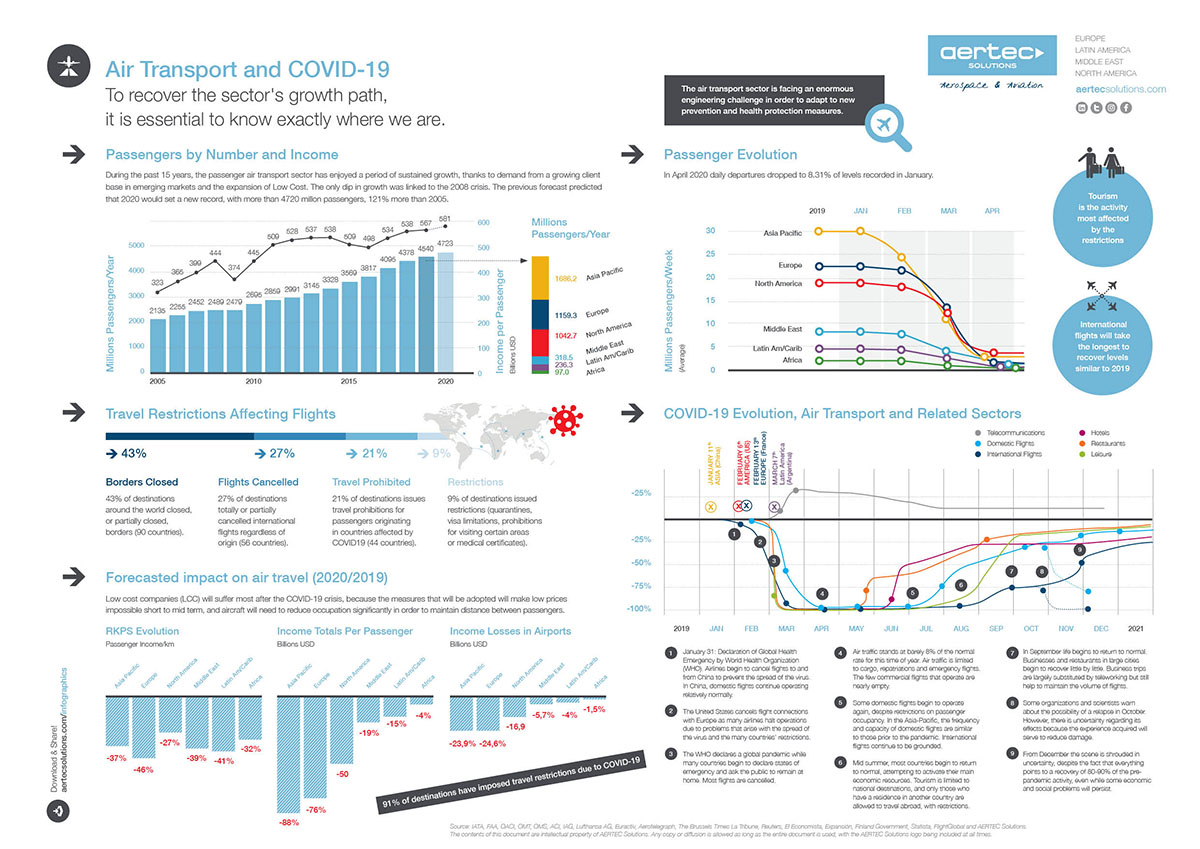Much has been said about the various ways in which the COVID-19 coronavirus crisis is affecting air transport and, consequently, the entire aviation industry. After years of uninterrupted growth, and with the expectation that this growth would continue, all forecasts have had to be rewritten. This crisis will not only affect industry figures for 2020, but will also force us to re-evaluate some hitherto immutable aspects of aviation.
There is a long road ahead of us to recover the industry’s trajectory of growth, which makes it essential to know exactly where we stand.
The incorporation of health prevention and protection criteria at all levels of air transport, from infrastructure management to passenger experience, will necessarily lead to a change in aviation business parameters. The industry scenario from the summer of 2020 onwards is expected to include aircraft with limitations in terms of capacity, lower flight occupancy, and more expensive tickets, along with other developments. And this will be in addition to a series of other changes that are being self-imposed by the industry itself, such as constant improvements in efficiency and in the fight against climate change. These aspects are no less important in the new global context.
In this infographic we have compiled some indicators that provide a global perspective on three key scenarios: the air transport industry’s status before the crisis, the direct impact of COVID-19, and a forecast for the recovery process.
Firstly, we give an overview of the evolution of air transport over the last fifteen years. To do so, we have considered the evolution of the number of passengers, both in terms of volume and income generated. We also show the relative contribution each region makes to the global air transport industry.
Next, we have analysed the impact of COVID-19 on the number of passengers in different regions of the world, which is closely correlated to the type and level of restrictions implemented in each area. We then show the expected consequences for the year 2020, both in terms of passenger numbers and in terms of expected revenue for airlines and airports.
Finally, we have carried out a provisional analysis of the recovery trajectory for air transport. To do this, we have taken into account secondary factors that may affect the movement of passengers, including those related to tourism and business. We have also considered the timeframes announced by major countries for reversing the measures taken during this health crisis. The graph shows the most conservative scenario in each case.
There is no doubt that we are living in complex times, and the knowledge and experience held by the aviation industry will undoubtedly be crucial for rebuilding this situation with solvency in order to resume a trajectory of growth.
Click image to download


